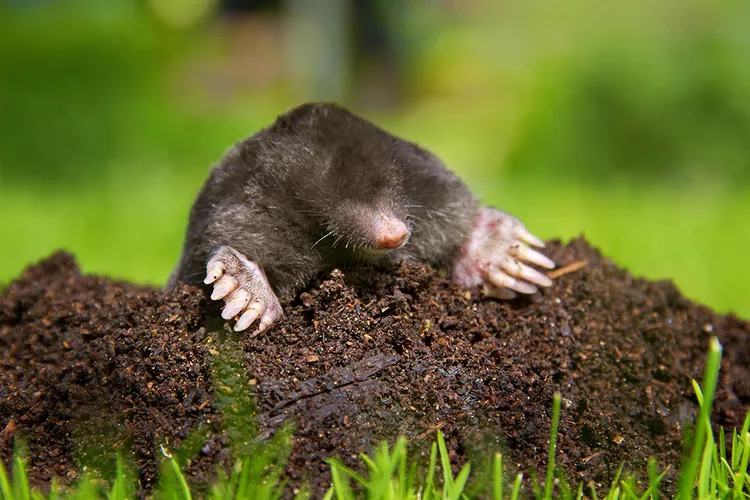When you notice 3-5 inch raised ridges crisscrossing your lawn and small soil volcanoes scattered about, you’ve got a mole at work. These small mammals can wreak havoc quickly, damaging plants as they tunnel underground. Their activity disrupts roots, turning the vibrant green ridges of their tunnels brown. On the upside, moles aerate the soil and help control destructive insects. Here’s how to handle and deter moles from your yard before they cause extensive damage.
Understanding Moles
Moles are burrowing insectivores that typically live alone except during breeding season in early spring. The intricate network of tunnels in your yard likely belongs to a single mole. They constantly create new feeding tunnels and seldom reuse them. Entry and exit mounds, shaped like symmetrical volcanoes, are signs of their activity. These mounds are connected to deeper runways 12-18 inches below the surface, where moles spend most of their time.
Moles primarily feed on insects and larvae, with a particular fondness for white grubs, a common lawn pest. They prefer moist, sandy loam soils and are most active during warm, wet months, although they remain underground year-round.
Identifying Moles
Moles have black or gray fur, a hairless snout, and tiny, almost invisible eyes buried in their fur. Their large, hairless front claws are well-adapted for digging, while their ears are not visible.
Distinguishing Moles from Other Pests
Homeowners sometimes confuse mole tunnels with those made by voles or pocket gophers, two other tunneling creatures. Unlike moles, voles leave subtle evidence of their tunnels, softening the soil without distinct ridges or mounds. Their small, flat, circular entrance holes are less pronounced compared to the volcanoes left by moles.
By correctly identifying mole activity and understanding their behavior, you can effectively manage their presence in your yard, preserving your lawn and garden from their disruptive tunneling habits.
